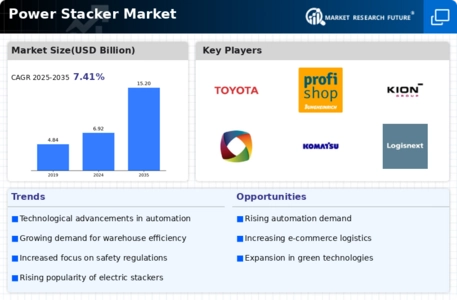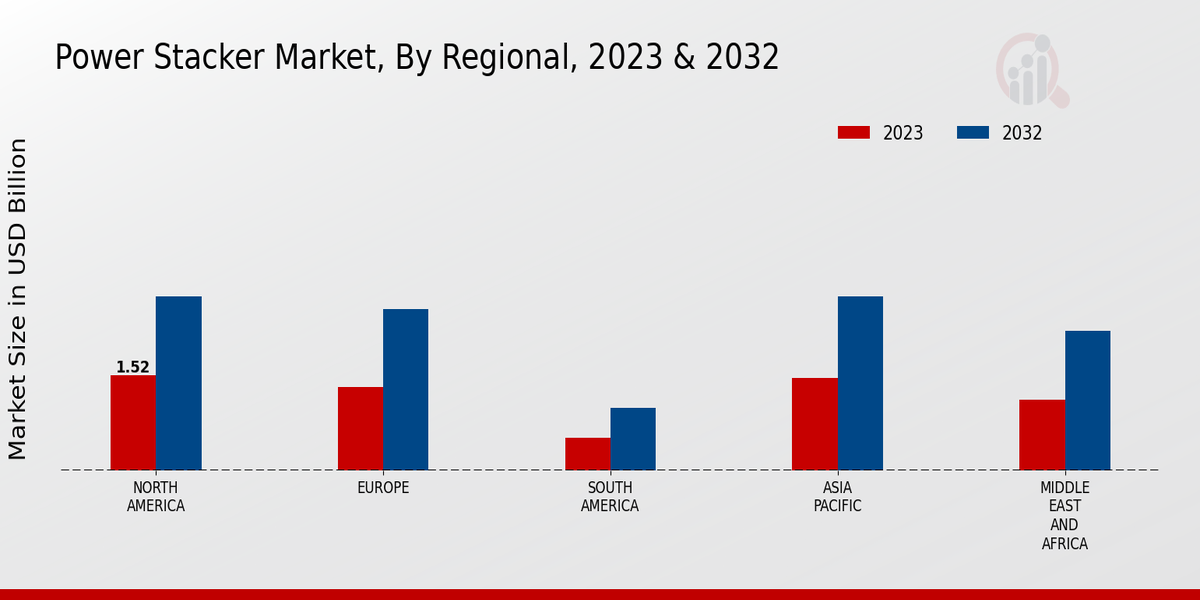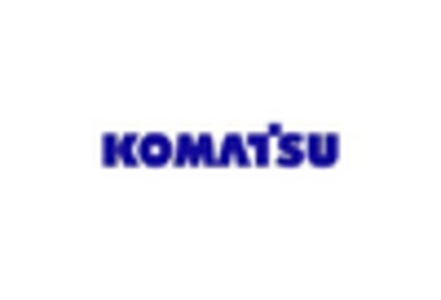Market Growth Projections
The Global Power Stacker Market Industry is poised for substantial growth, with projections indicating a market size of 6.92 USD Billion in 2024 and 15.2 USD Billion by 2035. This growth trajectory suggests a compound annual growth rate (CAGR) of 7.41% from 2025 to 2035. Such figures highlight the increasing adoption of power stackers across various industries, driven by factors such as technological advancements, rising demand for efficient material handling solutions, and a focus on workplace safety. The market's expansion reflects broader trends in automation and logistics optimization.
Growth of E-commerce and Retail Sectors
The rapid growth of the e-commerce and retail sectors significantly influences the Global Power Stacker Market Industry. As online shopping continues to gain traction, the need for efficient warehousing and distribution solutions becomes critical. Power stackers facilitate the swift movement of goods within warehouses, ensuring timely order fulfillment. This trend is underscored by the increasing number of fulfillment centers being established globally, which rely on power stackers for efficient operations. The anticipated CAGR of 7.41% from 2025 to 2035 indicates a robust market response to the evolving demands of the retail landscape.
Environmental Sustainability Initiatives
Environmental sustainability initiatives are becoming increasingly relevant within the Global Power Stacker Market Industry. As businesses strive to reduce their carbon footprints, there is a growing preference for electric and energy-efficient power stackers. These machines not only comply with stringent environmental regulations but also offer cost savings in terms of energy consumption. The shift towards sustainable practices is likely to drive innovation in power stacker design and functionality. Consequently, manufacturers are expected to invest in developing greener technologies, which may further enhance the market's growth trajectory.
Focus on Workplace Safety and Ergonomics
An increasing emphasis on workplace safety and ergonomics drives the Global Power Stacker Market Industry. Organizations are recognizing the importance of investing in equipment that minimizes the risk of injuries associated with manual handling. Power stackers are designed to reduce physical strain on workers, thereby promoting a safer working environment. This focus on safety is reflected in regulatory frameworks and industry standards that advocate for the use of ergonomic equipment. As companies prioritize employee well-being, the demand for power stackers is expected to rise, contributing to the overall growth of the market.
Technological Advancements in Power Stackers
Technological advancements play a pivotal role in shaping the Global Power Stacker Market Industry. Innovations such as automation, IoT integration, and enhanced battery technologies are transforming traditional power stackers into smart, efficient machines. These advancements not only improve operational efficiency but also enhance safety features, reducing the risk of workplace accidents. As industries increasingly adopt these technologies, the market is expected to witness substantial growth, with projections indicating a market size of 15.2 USD Billion by 2035. This evolution suggests a shift towards more sophisticated equipment that meets the demands of modern logistics.
Rising Demand for Efficient Material Handling Solutions
The Global Power Stacker Market Industry experiences a surge in demand for efficient material handling solutions across various sectors, including manufacturing, logistics, and retail. As companies strive to enhance productivity and reduce operational costs, power stackers offer a versatile and effective means of transporting goods. This trend is particularly evident in warehouses, where the need for space optimization and quick retrieval of products is paramount. The market is projected to reach 6.92 USD Billion in 2024, reflecting a growing recognition of the benefits that power stackers provide in streamlining operations.



















Leave a Comment